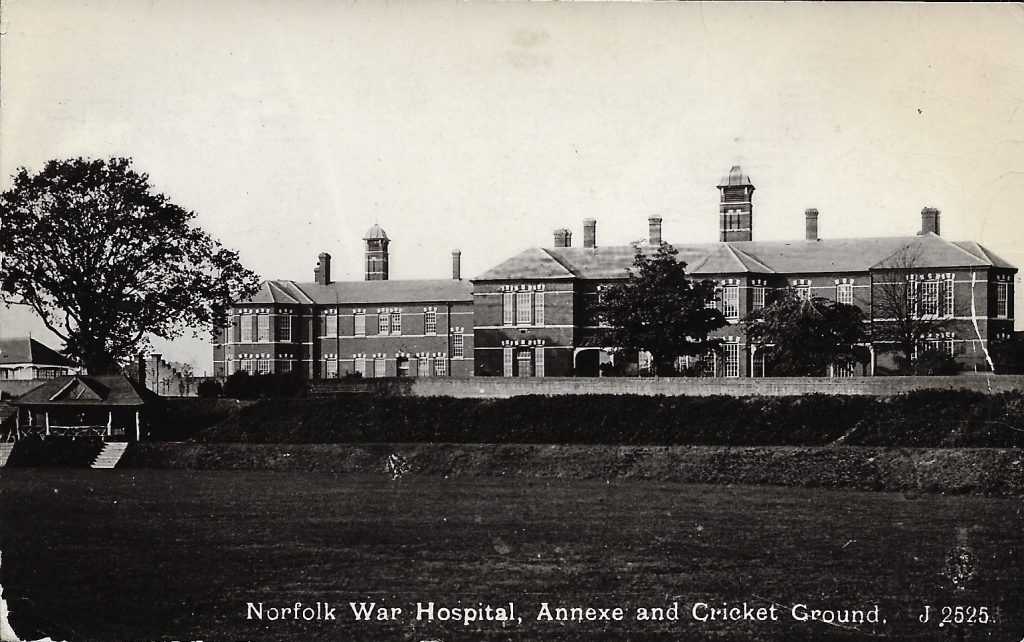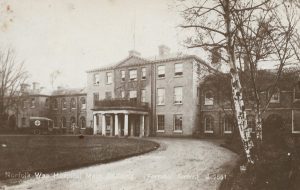Henry was born on 8 August 1888 in North Lopham, Norfolk. His parents were Frederick and Clara Pechey. Henry was also known as Harry.
In 1891 Frederick and Clara ran a grocery and drapery shop in the Street in Saxlingham Nethergate.
Henry had four siblings;
Mary born 1882
William born 1883
Thomas born 1884
Norman born 1895
The family continued to run a shop in Saxlingham during the following two decades.

. In 1911 William was helping his father in the shop, Mary was a school teacher and Thomas was a hairdresser.
Henry had moved to London, where he was working as a wholesale Manchester warehouse man. He was living in an hostel run by his employers Messrs. Cooks. The hostel was at 16 Stamford Street, S.E in Southwark. The employees were housed in 9 properties which the firm owned. There were 267 male employees, mostly warehouse men.
Manchester cloth had a dense pile and was like corduroy. It was worn by poorer workers. Messrs Cook, Son and Co Ltd. Were one of the largest wholesale clothing and traders and drapers of the late 19th and early 20th century. The firm concentrated on the warehousing and distribution of the cloth rather than manufacturing it. They employed several commercial travellers.
Henry enlisted on 21 February 1916 in the Army Service Corps. His service number was 162877. He was involved in transport and at the end of the war was in the Caterpillar Section. He served in France, Belgium and Germany.
He joined in Grove Park, London aged 27 years old. He was five feet 7 inches tall with a 35 inch chest. He weighed 9 stones 12 lbs . He had good physical development and vision. He was still working as a warehouse man when he enlisted.
He arrived in France from Folkestone on 11 August 1916. He served in France until the Christmas eve 1917 when he was granted leave till 7 January 1918.
Unfortunately he burnt his right hand whilst on leave and was admitted to the Norwich Military Hospital on 2 January1918. He was in hospital for 12 days. The medical report states that his hand was virtually healed before he was admitted. It was considered to be an accident.


He re-joined his regiment from the hospital on 14 January 1918.
In July 1918 Henry contracted influenza and spent 14 days receiving medical treatment. He was taken by the 10th Canadian Field Ambulance to 6th Stationary Hospital which was in Frevent. He returned to duty on 14th July 1918.
On 8 September 1918 he was admitted to 45th Casualty Clearing Station at Bailleulval. He was transferred to 20th General Hospital at Camiers on 23 September with a double inguinal hernia.
This is the medical officer’s report,
“This man was admitted on 8 September 1918 suffering from neurasthesia. He was evacuated to the Base on 23 September 1918 on account of a double inguinal hernia. It was not considered however that the hernia was the result of injuries or had any relation to the occurrence which brought him to hospital.
The vicinity of his camp was shelled on 7 September 1918 and he fainted away and was carried to a field ambulance. On recovering consciousness whilst being carried away he showed great excitement. His NCO in charge thought he had shellshock. He was previously suffering from a hernia but was not evacuated from his unit for that cause on 7 September 1918.”


Two photographs of 20th General Hospital at Camiers.
He returned to his base unit on 3 October 1918 and continued to server for several months after the end of the war. He ended up serving in Germany. He was examined in Eurkirchen on 11 September 1919 with regard to a disability pension and his hernias. He stated that he had the hernias from July 1918 when he was in France. He managed them with a truss and had occasional pain from them. It was advised that he should have an operation. He was awarded a gratuity of £48. 15s. It is not known if he had an operation.
As he is on the War Memorial it is assumed that at the end of the war he came back to Saxlingham Nethergate. However neither he nor members of his family are on the Electoral roll for Saxlingham after 1920.
In 1925 he married Margaret Davies, born 14 January 1897, in Wales.
In 1939 they were living at 11 Felhampton Road, New Eltham, London. He was working as a commercial traveller. They do not seem to have had any children.
They continued to live at the same address until Margaret died.
Margaret died on 18 February 1971.
It is thought that Henry then moved to live in Norfolk. He died on 26 February 1975 and his address was 20 Waveney Close, Wells-next-sea. His brother, Thomas and his nephew lived in Wells, so it is assumed he moved to be near his family.
Acknowledgements
England & Wales, Birth, marriage, death index 1837-2005
UK Census Collection
British Army Medal Roll Index cards, 1914-1920
1939 Register- www.findmypast.co.uk
Norfolk Electoral Rolls-Southern Division Saxlingham Nethergate and Thorpe, (Absent Voters Lists 1918-1920) 1920-1931
British Army Pension Records
England & Wales, National Probate Calendar 1858-1995
Photographs of 20th General Hospital – Maud Kealey. www.pineinterest.com
Information about Manchester cloth and Messrs. Cook- Rosemary and Stan. Rocliffe. Roots and Branches, page 2013, on the Internet.
Photograph of Norwich War Hospitals, Saxlingham Village Shop. Postcard collection, Jan Fox
If anyone has any photographs or information about this person, please contact me. Email jan@janmfox.co.uk
